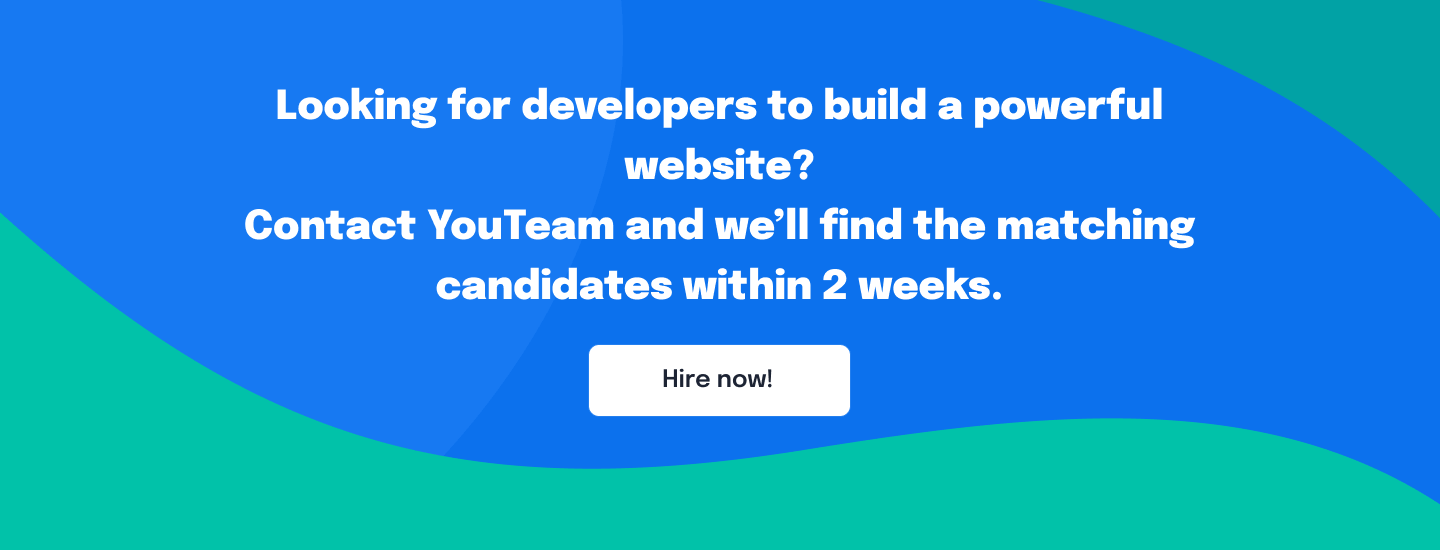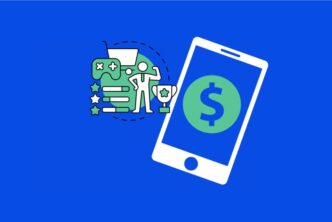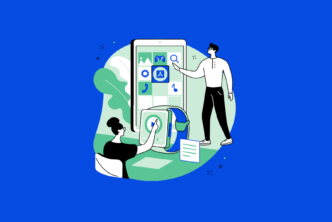From a customer persona, what do you expect from a service? Whether it is the email you get from the eCommerce platform you shop on regularly or gift hampers you receive from a company for being their loyal customer, one thing is always expected. It’s personalization.
Personalization is highly effective when it comes to improving your website’s presence in the world. The traditionally styled webpages, which offered similar content to all their visitors, are in their way of obsoletion. Nowadays, to boost the conversion rate on your website, you need to invigorate the most relevant content in it as per the preference of individual users.
In this predominant era of personalization, website developers and marketers are more focused on improving the UX of the sites to make them more user-friendly and user-customized. As per market research, at least 91% of consumers are more interested in shopping from brands, which give offers and recommendations based on their preferences.
Thus, personalization proves to be one of the most effective ways to drive more sales and target a higher ROI you are making in digital marketing.
Here is a complete guide on website personalization, which you can follow to boost your conversions and leverage your online presence.
Table of Contents
What is Website Personalization?
Before you take a step towards personalizing your website, the idea needs to be clear. Website personalization is a well-approved, unique marketing strategy, which adds value to a site with personalized recommendations, tailored dynamic content, and special offers based on the customer’s shopping behavior and interests. Website personalization aims to address the specified needs of customers even before they mention them.
Why Would You Need Website Personalization?
Where does the maximum power of your business marketing lie? It is always the word-of-mouth that you generate from your customer. As you strive to create an excellent experience for your customers, they will help you build your brand awareness. A satisfied customer will always tell others about the brand and persuade them to opt for the services of that company, marking a considerable achievement for any business.
So, here is how website personalization helps:
- It lets you understand the pain points of your visitors and their needs
- A credible way to build brand loyalty
- Leverages new user registrations
- Nurtures visitors and enhances your conversions
Brands that ease out a customer’s effort in browsing endlessly to find the right product for themselves can always enjoy an extra bite in the pie. According to Kibo, 26% of merchants said that personalization could be the reason for increasing both customer lifetime value and customer satisfaction. Building a personalized experience thus helps your brand to define itself for the services it is offering, thereby rendering strategic growth.
How Do You Get Started with Personalizing Your Website?
Website personalization is nothing but the art of telling your customers how much value they hold in your business. It is an intelligent way to appreciate their presence on your website, and you assure them that the service you are providing is tailor-made for them.
So, let’s go through the basic steps you should take to make your path towards website personalization easier.
Learning the fundamentals of website personalization
Personalization is applicable and applauded in each of the aspects of an online visitor’s journey. To ease out your business challenges and see where personalization can boost your business goals, you need to ask yourself some simple questions:
How do you identify your leads?
To lower the difficulties in reaching out to your target audience, the first and most vital thing to ask yourself is who your leads are. Defining for whom you are selling can enhance the chances of getting more quality traffic to your site. Here, we offer some simple tips for you.
- Survey your current visitors.
- Consider making a list of all your products and services to assess who is buying and who is not.
- Have a quick identification of the products or services, which are bringing more business.
- Analyze what people are more likely to buy from you.
PRO Tip: Managing this huge data while keeping it easy to understand for others is difficult. However, customer database software can help you manage and analyze all this data from a single interface.
To have a visual picture of the leads, you can add charts to your website. Using the WordPress Chart plugin will help you to have both static and dynamic charts. It will help you to analyze the results and clearly identify your leads.
What intent do your visitors have?
It is vital to understand what your visitors intend when they visit your site. It is crucial to find out what they want from your website.
- In contextual intent, you need to look at the keywords they are using for searching products. You can use these keywords to develop a dynamic showcasing of content that matches their intent accurately.
- On the other hand, behavior-based intent can give you better data based on the browsing history of a potential customer.
How do you incorporate personalization into your web pages?
Finally, you have to think about where you can use personalization in your website. Think of the various website areas or pages, which will be better to build communication with your leads. The most crucial pages you need to focus on are the homepage, product pages, category pages, pricing, and check-out pages.
For example, if you target an audience who are budding athletes and look for the best-budgeted sports shoes, you can tailor-make your website pages for each visitor and showcase shoes per their search intent or past purchase.
User segmentation for personalization
Regardless of your business size or niche, every customer who lands on your website should be treated the same. All of them come with a chance to turn into your potential leads. Treating them with special attention can propel the growth of your business in the right way. But how do you do it? Well, here are a few tips for you.
#1 Target your visitor’s behavior
Use your website to observe their behavior pattern and way of interaction with your eCommerce platform, or other platforms. Have an eye on the pages they navigate into, actions they take and search terms they use. You can use this behavioral data to add value to their experience. For example, popup apps allow you to create marketing campaigns based on visitor browsing history, pages they visited, products they viewed, and even behavior like adding a product to cart or clicking a button.
#2 Consider the geo-location
The location of your user is one of the most common ways to personalize their experience. Suppose you are running a business in the USA and want to enhance your customer base in a particular location. In that case, you can show the visitors some special discounts on registration for that specific region.
#3 Pay attention to demographics
Visitor demographics are highly crucial to add personalization to your website. Demographic data deals with a visitor’s personal information like age, gender, income, education, and occupation. Using these demographics, you can show relevant products to them based on their preferences.
#4 Psychographics have some exceptional value
Understanding what your visitors are thinking and what they prefer to have from your platform can serve you a better notion about website personalization. The thumb rule is to connect with your customers’ desires and emotions, which paves the way to a valuable relationship between your business and prospects.
#5 Firmographics are also essential
For a B2B industry, firmographics are very vital. Visitors who are landing on your site have businesses from various locations. Also, their search intent differs. Thus, their preference also differs from one another. In such cases, tailor-made client testimonials on your website, content in local languages, customer reviews, custom logos, and special pricing schemes based on a visitor’s industry can make your brand message stronger for them. Your logo must be engaging and memorable to effectively represent your brand. To achieve this, you can use many tools, such as Placeit and Canva, to create logos that resonate with your audience. Alternatively, several alternatives to Placeit or Canva also offer similar functionalities, providing you with various options to design a standout logo.
How Do You Personalize Your Website Step by Step?
The steps need to be strategic for website personalization to give your business a new arena to expand. So, here is how you do it step-by-step.
Step 1: Start with collecting visitor’s data
Your website must collect the correct data from the visitors and use it efficiently, rendering them a great customer experience.
As per a whitepaper published by SmarterHQ, at least 90% of consumers are more likely to share their behavioral data with brands to gain a much easier user experience.
The following are the various ways that you can use to collect visitor’s data:
- You can ask your visitors directly to collect the basic information about them.
- Mapping their journey on your website can give you better insight into their behavior.
- Use cookies and web beacons to collect more credible information about them.
- If they log in to their account on your site using social media handles, you can track their social media activities to get better insights.
Step 2: Profiling your visitors
After collecting your visitor’s data, the next step would be creating customer profiles. We also call it the buyer’s persona.
It works as a comprehensive guide that delivers valuable data about how to reach your target leads. It helps you know your customers’ goals and what they usually view on your site, which can be much helpful in developing personalized messaging strategies.
Step 3: Build up your goals
Website personalization is never complete without defining the goals. Your goals can range from increasing your conversions to enhancing your brand awareness; it depends upon your business requirements. Now, once your goals are set, you can personalize your website accordingly.
Step 4: Formulate an effective strategy
To evaluate your website personalization journey, developing a strategy is the most crucial step. You need to build a plan that perfectly aligns with the pain points and requirements of your customer.
For the homepage area, you should build a valuable appearance with proper customer addressing, product recommendations, and the right content. The product page needs optimization with better and intuitive search results, detailed descriptions of each product, etc. Also, it would help if you focused on the strategy building for your shopping cart page to avoid cart abandonment.
Step 5: Implement your strategy to your website
This step includes the implementation of your strategy to the website to facilitate a tremendous personalized user experience. The following are the steps you can follow to ensure a top-notch strategy implementation:
- Identify and address the campaigns for your strategy
- Add priorities to your identified campaigns
- Consider suitable algorithms that align correctly with your campaign goals
- Test your campaign’s efficiency and iterate it
Step 6: Measure your website performance
The last and final step should be measuring your success in website personalization using proper metrics. Here are the metrics that you should measure.
- The time users are spending on your site
- View the number of pages visited by users
- Consider the visitor frequency
- Assess the volume of new visitors and returning visitors
- Check on the actions taken by users on your site
- Go through the user feedback
- Analyze the quality of visitors
- Track the improvement in your ROI
What Technology-Oriented Additions You Can Make for an Intuitive Website Personalization?
The new age website marketing is all about adding more ease to the shopping experience of users. Engaging with consumers in real-time will leverage your businesses to have more ROI. So, to create a tailor-made shopping experience for users, you must use certain high-end technologies.
The following are a few technologies that you can consider for your website personalization.
CRM
CRM or Customer Relationship Management works as a process that helps businesses to administer easy interaction with customers. It collects various data from multiple sources, which, in turn, allows you to know more about the customers to retain effective personalization on your site. This, in turn, lets you build a powerful relationship with your customers and helps you drive your sales and revenue.
Behavioral data
Your website holds the key to understanding your customer’s habits and behaviors, and leveraging this data is extremely valuable. For subscription-based businesses, for example, bespoke solutions such as Chargebee’s e-commerce subscription management allow you to anticipate subscribers’ future needs through supercharged analytics and reporting. Plus, all of your subscription billing will be automated in the background so you can concentrate on building better relationships with your customers.
Chatbots
Chatbots or live chats are one of the easiest ways to connect with your customers in real-time. By incorporating automated chatbots on your website, you can offer real-time shopping assistance to your customers to make them enjoy the best service. Keep in mind that chatbots are far from perfect. Although they’re great for real-time customer service, they need to be coded correctly. For example, a chatbot that doesn’t know the difference between ‘affect and effect’ will not make a good impression.
AI
The inclusion of AI or Artificial Intelligence is the best way to add more value to your website. With its intelligent learning technology, AI can quickly analyze your customers’ shopping behavior and automatically offer them the necessary service and product suggestions based on their preferences. Hence, another easy way to add more points to your website personalization strategy is to hire AI-augmented specialists to help you out.
You can also use augmented reality software to increase the level of customer interaction in your business. Softwares like Maxst, Wikitude, Apple AR Kit, etc. have lots of customizable features which you can easily integrate with your website.
What are the Benefits You Can Earn from Website Personalization?
Your entire effort behind website personalization renders some significant advantages to your business. The following are a few benefits that you can get from website personalization.
- More relevant recommendations of products
- A better understanding of your customer’s behaviors
- Higher chances of earning customer loyalty
- Increased user engagement on your website
- Higher conversions with CTAs and landing pages
Key Takeaways
Website personalization is beneficial in every aspect to stay relevant in the current marketing trends.
➢ Start with understanding the goal of website personalization
➢ Define your customer’s persona and address the right target audience to streamline the goals of your website personalization
➢ Collect the right user data and, using it, build up a properly scaled marketing strategy
➢ Based on your developed strategy, make the necessary personalization of your website
➢ Last but not least, do not forget to measure your success from website personalization
Personalizing your website takes some effort, but it is worthy enough to achieve higher conversions more strategically. Thus, be ready with your strategy to let your customers enjoy an immersive, personalized experience on your website.
If you need any developers’ help to improve your website performance, contact YouTeam to hire the required engineers within a week.







